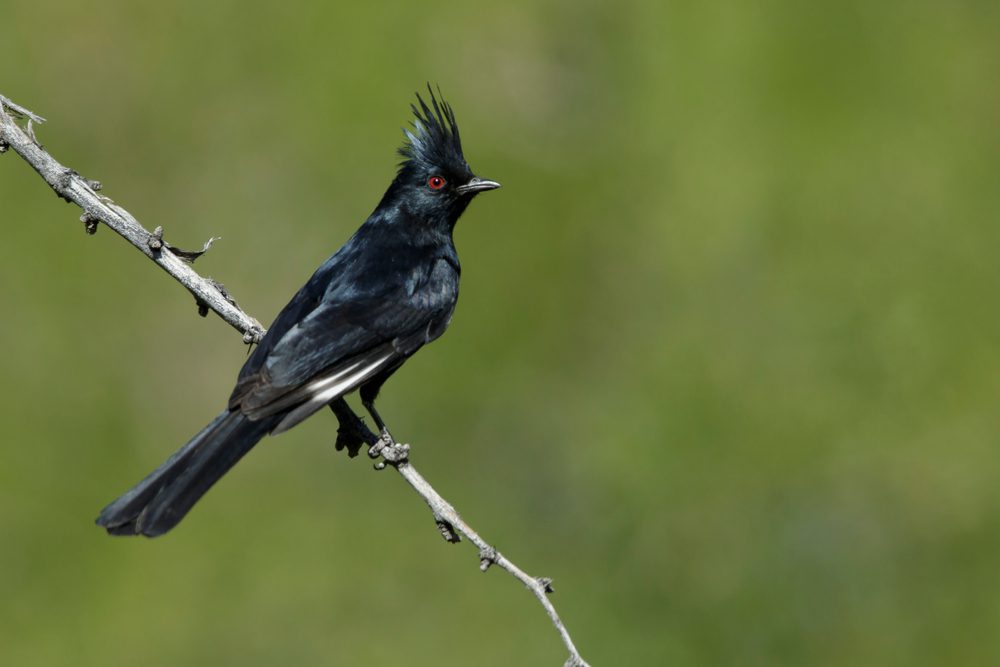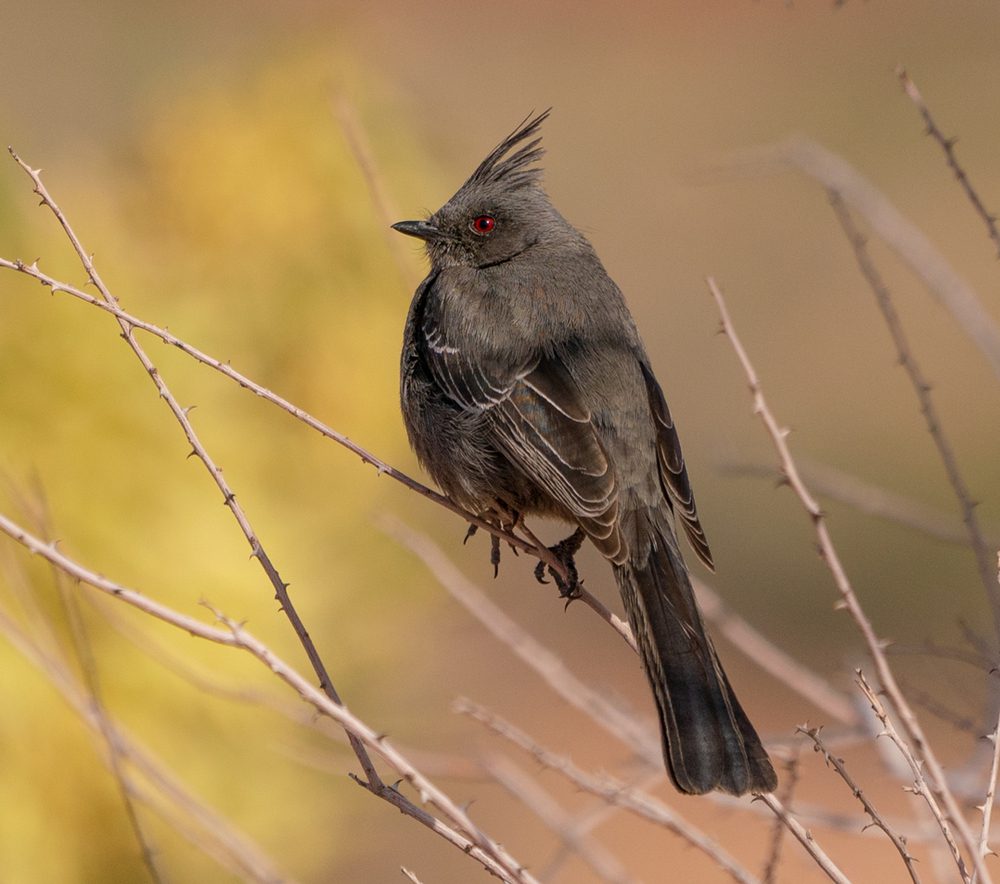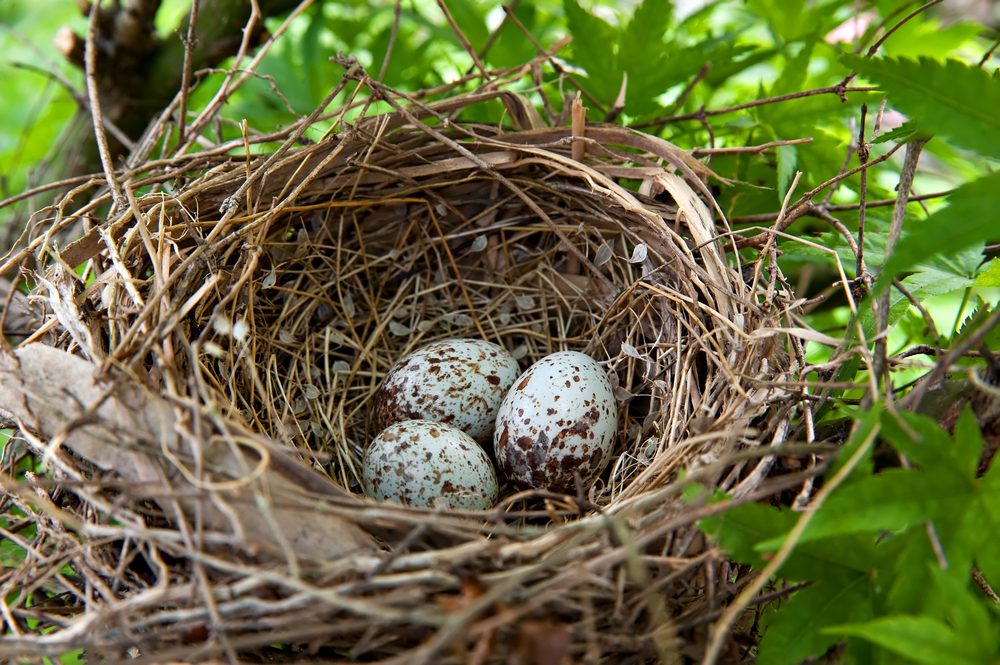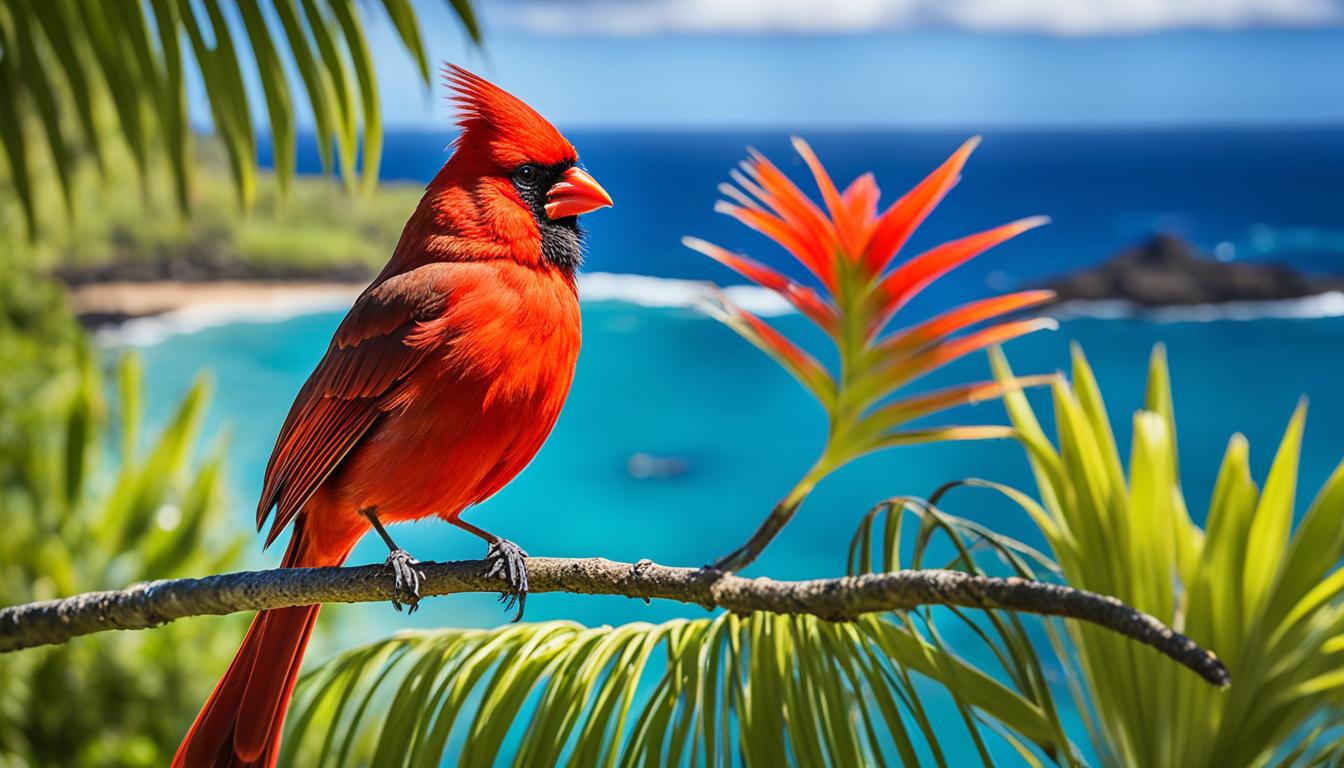Ever seen a cardinal that’s not red? Believe it or not, there’s a bird that looks like a black version of the Northern Cardinal! The male is all black with a cool mask and throat, making him look super sharp. The female isn’t quite as flashy, but she still has some reddish hints on her wings, tail, and head.
Key Takeaways:
- The black cardinal bird is a variety of the Northern Cardinal species.
- The male black cardinal features a black mask and throat, while the female has warm reddish tinges in its plumage.
- Black cardinals are known for their distinctive hunched-over posture and clear ringing song.
- They can be found in various habitats, including backyards, parks, woodlots, and shrubby forest edges.
- The black cardinal’s behavior, diet, and conservation efforts are important to consider for birdwatchers and nature enthusiasts.
Black Cardinal Behavior and Habitat
Imagine chilling in a bush, super low-key. That’s kind of what black cardinals do! They like hanging out in shrubs and trees, sometimes even scooping up food on the ground. They’re not loners though – these birds are social butterflies, often seen in cool couples. Birdwatchers love spotting them!
Black cardinals are pretty chill with humans too. You might even see them hanging around backyard feeders, parks, or little forests. Their feathers are awesome – a sleek black with pops of red, making any bird feeder look way cooler.
“I always get excited whenever I see a pair of black cardinals outside my window. Their vibrant colors and charming behavior never fail to brighten my day!” – Bird Lover
Black cardinals are like apartment hunters with very specific needs! When it comes to building a nest, they love places with super thick bushes and climbing vines. These tangles act like their own personal forts, keeping them safe and hidden.
They also prefer areas that have a mix of everything – tall trees, short bushes, and grassy patches. Why? Because this kind of neighborhood has a smorgasbord of yummy things to eat!
Even in the winter, you might catch a black cardinal taking a dip in a bird bath or a puddle. They seem to really enjoy keeping their feathers clean and looking sharp, just like preening for a big date! Now, let’s dive deeper and see exactly what kind of places black cardinals like to call home.
Black Cardinal Habitat
Black cardinals can be found in a variety of habitats across their range. From suburban backyards to parks and woodlots, these adaptable birds have managed to thrive in diverse environments.
They particularly enjoy dwelling in habitats with a combination of shrubs, trees, and open areas. This provides them with the ideal balance of cover and food sources. Their affinity for thick shrubs and vines is driven by their nesting requirements.
To further illustrate the preference for different types of habitats, here is a table showcasing their habitat choices:
| Habitat Type | Features |
|---|---|
| Backyards | Shrubs, trees, bird feeders |
| Parks | Grassy areas, mature trees |
| Woodlots | Thick undergrowth, trees, shrubs |
By understanding the black cardinal’s preferred habitat, we can take steps to create inviting environments that attract these beautiful birds to our own yards. Not only will this enrich our birdwatching experiences, but it will also contribute to the overall conservation efforts of these remarkable creatures.
So, the next time you spot a black cardinal perched in your garden or hear its melodious song, take a moment to appreciate its unique behavior and the habitat it calls home. These small moments of connection with nature can bring immense joy and a deeper appreciation for the wonders of the avian world.
Black Cardinal Diet and Feeding Habits
The diet and feeding habits of the black cardinal are fascinating and unique. These birds make use of their strong beak and tongue to extract seeds from their shells. They are skilled at cutting or crushing the shells to access the nutritious contents inside.
The black cardinal has a varied diet that includes a range of seeds and berries. They are particularly fond of sunflower seeds, safflower seeds, and dark-colored berries like mulberries and blueberries. These food sources are rich in nutrients and provide the black cardinal with the energy it needs to thrive.
Black cardinals are attracted to bird feeders that offer large seeds, making them frequent visitors to backyard feeding stations. They are also adept at foraging directly on the ground, searching for fallen seeds and particles. Providing their favorite foods can easily entice these beautiful birds to visit your garden.
Here are some key highlights of the black cardinal’s diet and feeding habits:
- Utilizes a strong beak and tongue to extract seeds
- Feeds on sunflower seeds, safflower seeds, and dark-colored berries
- Common visitor to backyard feeding stations
- Forages directly on the ground for fallen seeds
To get a better understanding of the black cardinal’s diet and feeding habits, take a look at the table below:
| Food Sources | Description |
|---|---|
| Sunflower seeds | Highly favored by black cardinals for their nutritional value |
| Safflower seeds | Another staple in the black cardinal’s diet, providing essential nutrients |
| Dark-colored berries | Includes mulberries and blueberries, which are a delicious treat for black cardinals |
Remember, providing a variety of these food sources will attract and nourish black cardinals, allowing you to witness their beauty up close.

Black Cardinal Sightings and Conservation
Black cardinals are a common sight in yards, suburban areas, and various habitats across their range. With their bright red color and distinctive crest, they are easily recognizable and a delight to observe.
While black cardinals are not considered a globally threatened species, their conservation is still a priority. Efforts focus on preserving their preferred habitats, which include maintaining shrubby forest edges and providing ample food sources.
Conservationists encourage birdwatchers and nature enthusiasts to contribute to the preservation of black cardinals by creating suitable habitats in their own yards or participating in bird monitoring programs. By doing so, individuals can play a crucial role in ensuring the continued presence of these magnificent birds in our environment.

I’ve always been captivated by the beauty of black cardinals. Their presence in our surroundings is a testament to the thriving biodiversity we should strive to protect. By taking small steps, such as providing quality habitats and monitoring their populations, we can make a meaningful impact on their conservation. Together, we can ensure that future generations will have the privilege of witnessing these striking birds in the wild.
Let’s explore some key actions that can support black cardinal conservation:
- Creating shrubbery and native plantings in your yard to provide shelter and nesting options
- Installing bird feeders with black cardinal-friendly seeds
- Participating in citizen science projects to help monitor black cardinal populations
- Supporting local conservation organizations dedicated to preserving habitats for black cardinals and other bird species
By taking these steps, we can actively contribute to the ongoing efforts to conserve and protect black cardinals, ensuring their continued presence for future generations to enjoy.
Did You Know?
Black cardinals are known for their resourcefulness in adapting to urban environments. They often thrive in suburban areas and can even be found nesting in well-tended gardens and parks. This adaptability highlights the importance of creating suitable habitats in both natural and human-made spaces to support their conservation.
Black Cardinal Symbolism
The black cardinal holds symbolical meanings in several cultures. In some Native American traditions, it is considered a sacred bird and symbolizes love, relationships, and trust. In other cultures, the black cardinal represents wisdom, spiritual guidance, and protection. Its distinct color and song make it a unique and special bird, often associated with positive attributes and messages.
Conclusion
There’s a bird out there sometimes called a “black cardinal”? It’s not exactly a true cardinal, but it’s still super cool. This awesome bird has sleek black feathers and might remind you of a regular cardinal (maybe with a goth makeover?). You can spot them in lots of places, from your own backyard to hidden woods.
Birdwatchers love these guys because they have interesting habits and eat a mix of yummy things. Plus, they’re an important part of the environment, and we need to do our part to keep their homes safe.
Here’s the coolest thing: black cardinals aren’t just pretty birds, they also have special meanings in different cultures. They can symbolize love, trust, being wise, and even getting help from the spirit world! Pretty neat, right? Their bright colors and beautiful songs make them stars of stories and myths. Learning about this adds a whole new layer of awesome to seeing them in nature.
So, the next time you see a black cardinal, remember – it’s more than just a bird. It’s a reminder of how cool nature is, and how we can all help keep it healthy. By planting trees, tracking birds with scientists, and supporting conservation efforts, we can all be heroes for these black beauties and the amazing world they live in!




